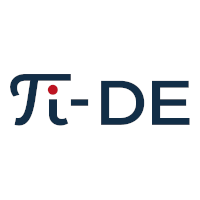E1.2 – Designing interfaces by templating: modeling epitaxially growth with a modified general force field
Principle Investigator: Prof. Stefan Grimme
Within the first TIDE cohort, we developed, among other things, efficient methods for computing singlet-triplet gaps[1] and electronic coupling integrals[2] and applied them to systems relevant in the context of TIDE.
Within the second TIDE cohort, we plan to further improve on the periodic implementation of the general force field GFN-FF[3], for which a purpose specific parameterization should be developed to enable a reliable polymorph ranking, also for large organic crystals of pi-conjugated systems. When the modified GFN-FF is able to correctly predict the preferred orientation of the molecular building blocks, i.e., the structures and energetic ranking of the corresponding polymorphs, we attempt to investigate under which device-related growth conditions the molecules grow epitaxially and how a possible transition into a bulk-like structure differs from the bulk crystal structure, taking into account the possible oligomerization of pi-conjugated molecules and the formation of H- or J-aggregates. In a later stage and in close collaboration with project E3.2, multi-scale simulations combining molecular dynamics (based on the modified GFN-FF) and kinetic Monte Carlo (kMC) simulations will be applied to model morphology evolution and kinetics in vdW-templated, epitaxial growth of pi-conjugated, organic materials relevant for building up electronic devices.
This project is a joint collaboration with Dr. Andreas Hansen.
References
[1] L. Kunze, A. Hansen, S. Grimme, and J.-M. Mewes, PCM-ROKS for the Description of Charge-Transfer States in Solution: Singlet−Triplet Gaps with Chemical Accuracy from Open-Shell Kohn−Sham Reaction-Field Calculations, J. Phys. Chem. Lett., (2021), 12, 8470−8480. DOI: 10.1021/acs.jpclett.1c02299.
[2] J. Kohn, N. Gildemeister, S. Grimme, D. Fazzi, and A. Hansen, Efficient Calculation of Electronic Coupling Integrals with the Dimer Projection Method via a Density Matrix Tight-Binding Potential, J. Chem. Phys, (2023), just accepted.
[3] S. Spicher, S. Grimme, Robust Atomistic Modeling of Materials, Organometallic, and Biochemical Systems, Angew. Chem. Int. Ed. (2020), 59, 15665–15673. DOI: 10.1002/anie.202004239.
The ideal candidate has a recognized Master's degree in chemistry or physics with specialization in quantum chemical methods and their application to chemical or material science problems. Initial experience with the application of GFN-FF and the modelling of periodic systems as well as kinetic Monte Carlo (kMC) techniques would be an advantage. Programming experience (Python, FORTRAN) and speaking fluent English are required.
